The Google Pixel 4 XL Review: Stuck In The Past In 2019
by Andrei Frumusanu on November 8, 2019 11:30 AM EST- Posted in
- Mobile
- Smartphones
- Pixel 4
- Pixel 4 XL
Display Measurement
The display of the Pixel 4 is one of the phone’s main features thanks to the 90Hz refresh rate. As mentioned in the introduction, the displays on the Pixel 4 series this year is again dual-sourced between LG and Samsung. The regular Pixel 4 receives an LG panel, while the 4 XL that we’re testing and reviewing today, uses a Samsung display.
Android Q promised to have implemented a new iteration of Google’s colour management system, and for the first time, the Photos app is actually able to properly display wide gamut pictures. Unfortunately, it’s still a very limited system in apps as they cannot display differing gamut pictures side-by-side, so for example the thumbnail view is shown only in sRGB. Most importantly, Chrome by default still doesn’t support wide-gamut content as you have to force it in the engine settings, and this implementation doesn’t use the OS’s CMS handling.
We move on to the display calibration and fundamental display measurements of the Pixel 4 XL screen. As always, we thank X-Rite and SpecraCal, as our measurements are performed with an X-Rite i1Pro 2 spectrophotometer, with the exception of black levels which are measured with an i1Display Pro colorimeter. Data is collected and examined using SpectraCal's CalMAN software.

Starting off with the brightness, the Pixel 4 XL is relatively conservative as it peaks out at 438 nits in all scenarios. It’s again very odd here as Google can’t seem to make up its mind on whether it wants to offer an auto-brightness boost or not. Last year, the Pixel 3 only had it available in its Adaptive mode, whilst this year the Pixel 4 doesn’t offer it all, even though the display drivers actually has the high-brightness mode implemented.
In terms of greyscale calibration and accuracy, on my unit things differed greatly based on brightness. At maximum brightness, the Pixel 4 XL was seemingly quite accurate with good colour balance and gamma reproduction. At our standard 200cd/m² measurement point however, things are quite worse. First off, all there’s a more notable colour shift towards greens on the unit which isn’t great. Following that, there’s also creeping issues with the gamma calibration as it’s non-linear and deviates a lot more from the 2.2 target. What this results in is some shades, especially at the higher levels, appear darker than they should be.
I’ve also noted and captured some sort of bug in the display behaviour; when I was measuring at minimum brightness, I encountered some really bad results. I’ve seen this mentioned by some other reviewers and the issue went away when I toggled the screen refresh rate. The odd thing though, is that I wasn’t able to immediately reproduce it afterwards and results on the new measurements were quite ok. The colour shift the phone took was extremely noticeable at the time the bug took place.

SpectraCal CalMAN
"Natural" Greyscale colours

In terms of dE2000, the biggest culprit to the average 2.29 result for me is the green tint of whites as well as the slightly off gamma.
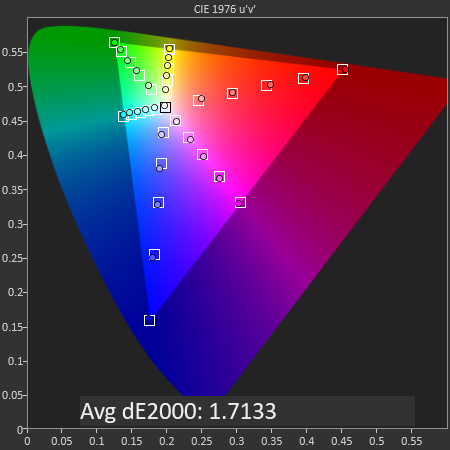
SpectraCal CalMAN
sRGB Gamut
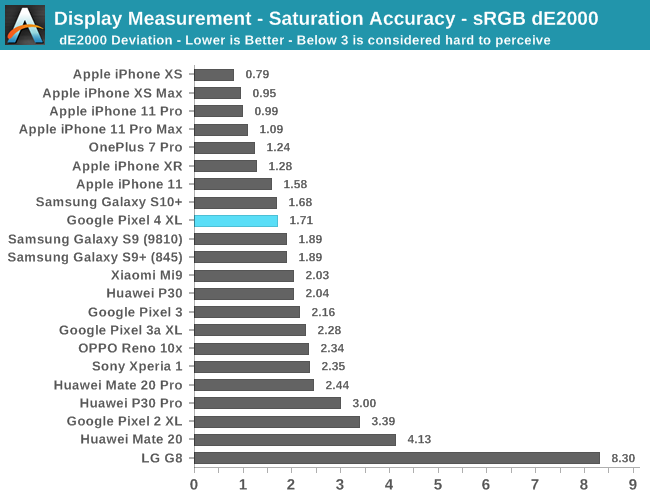
In the sRGB gamut, the Pixel 4 XL does well with a dE2000 of 1.71. The biggest issue again is a shift in the tones towards green, but also seemingly very slight oversaturation of all the tones.
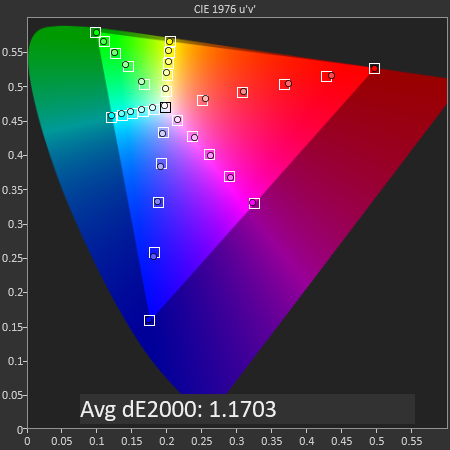
SpectraCal CalMAN
Display P3 Gamut
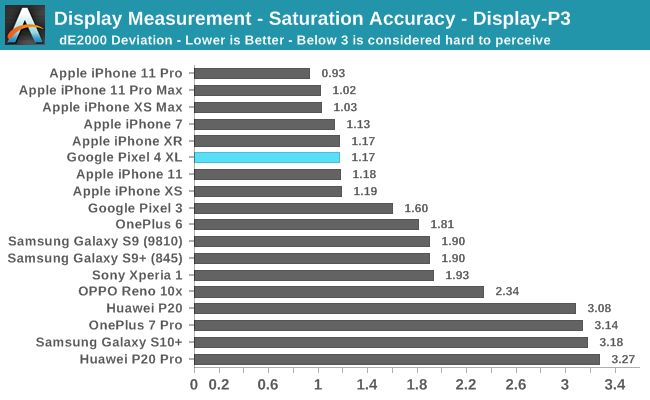
The Display P3 gamut performs a lot better. Here while the green tint is still present, the saturation levels are better and thus the Pixel 4 XL ends up with an excellent dE2000 of 1.17.

SpectraCal CalMAN
Gretag-Macbeth

Finally, in the GMB test, the Pixel 4 XL ends up quite average with a score of 2.34 as it’s showcasing tones that are too dark, a green tint in the whites, with some hue errors for a few tones.
Display Conclusion – Good, but not A+
Overall, the Pixel 4 XL’s display characteristics beyond it’s 90Hz refresh rate are quite average. Whilst Google has been able to improve the calibration compared to what we measured on the regular Pixel 3 last year and the 2 XL the year before that, it’s still quite a bit behind what some other vendors are able to achieve. The display’s lower brightness is also a bit of an issue in direct sunlight as it lacks any kind of boost behaviour. Finally, the remaining characteristics such as viewing angles and sharpness are excellent, but that’s just generally a common characteristic of panels with these specifications.
The results today aren’t really a surprise to me given Google’s track record with the displays on the Pixel series, however it does stand in contrast to what the company was proclaiming at launch: “A+ rating Best Smartphone Display Awards” really doesn’t mean anything at all if, first of all, it’s a sponsored award, and secondly, if the measurements aren’t representative of a random production unit. Make of it what you will.


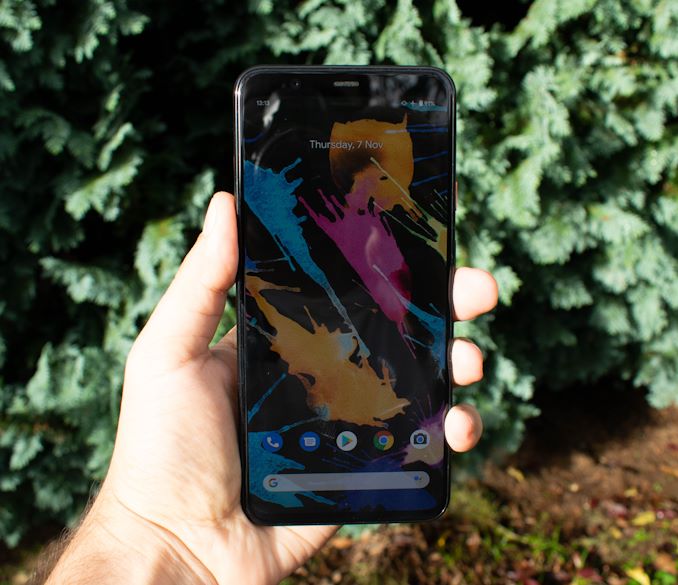
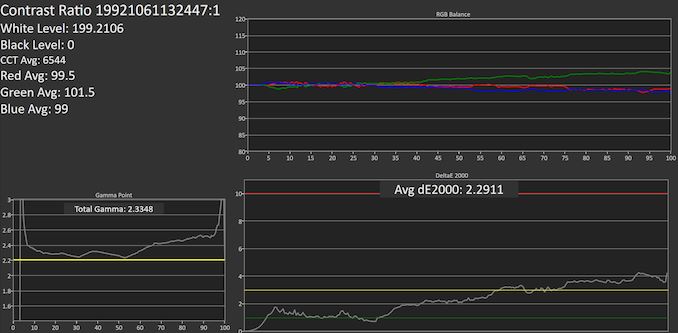
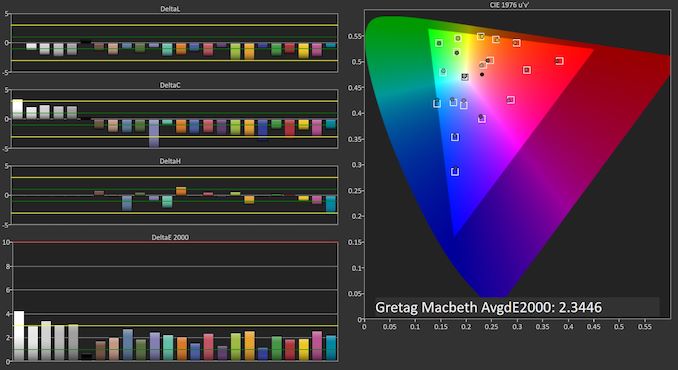








159 Comments
View All Comments
Andrei Frumusanu - Friday, November 8, 2019 - link
It goes up to 600 nits in HDR video content, I don't currently have a good methodology to measure that.s.yu - Friday, November 8, 2019 - link
Daylight:I now realize that the crushed black issue is probably not really an issue, it's an attempt to hide the raised noise floor resulting from stacking underexposed shots. Take the poorly lit loading area of that building in sample 3 for example, Pixel 3 displays a similar depth into the shadows to iP11P and S10+, but Pixel 4 goes further at the cost of a lot more noise, while Mate30P simply has more shadow DR because of the larger sensor and that it doensn't use such a stack.
Also I don't believe the difference in shadow mapping(darker, but far from pitch black leaves, vs. lighter leaves) is evidence of raised DR. It's only raised DR if deeper shadows are revealed at the cost of no more noise, or if the same shadow is now less noisy, but neither is true as evident in the foreground shadow of sample 4, Pixel 4's shadow is, as I noticed at GSMA without even a direct comparison, more noisy than Pixel 3's. Not only noisy but flat-looking, an overdone HDR effect. It's so bad there's blotching, under the roof of the building to the left in sample 4. The costs seem to notably outweigh the gains, or Pixel 4 used an even faster shutter for this specific shot to recover more highlight, resulting in worse shadows. In this shot iP11P's hybrid bracketing approach utilizing longer exposure time for some of the frames shows its strength and delivers the most solid shadows among the different stacking approaches. So if Apple were to lift shadows to the same extent as Pixel 4 then we might have been able to see deeper shadows back in sample 3.
Come to think of it, Pixel 4's noisy shadows were even notable in the official samples leaked before launch. I thought it was due to pre-retail firmware but I was too optimistic.
Look's like Apple's is the best overall but Pixel 3 has the most stable detail retention. Samsung still lacks detail as it has been for quite some time but at least DR wise it generally matches Apple. Huawei's latest Mate30P greatly dials down both sharpening and NR resulting in a surprising number of keepers, only sometimes sharpening would seem too low yielding in what's now not waxyness but a thin haziness, or maybe the sharpening threshold is too high.
Low light:
In the first sample Pixel 4 obviously added more NR, not a good choice as the noise level of Pixel 3 in this image is completely manageable, more NR only smeared the output. iP11P seems between the two Pixels in a number of metrics. Huawei's night mode apart from somewhat aggregated texture intensely suppresses highlights at the cost of various artifacts present since P20P, can't say I ever liked it.
Sample 2: Again Pixel 4 is rather taking the shove the noise floor in your face approach rather than actually yielding more shadow DR, just look at the blotchy sky compared to its predecessor, however it's able to better recover highlights from the office windows.
In the castle sample Pixel 4 definitely does something right, it's not only much cleaner but the blotchy sky is gone. Also I suspect less falloff from the new lens, which yields better corners. Mate30P's technically very large UWA is better than the Samsung's tiny sensor yet a lot worse than the main, perplexing as this sensor's output stacked should still be competitive, also the fact that Mate30P's night mode is only ~21mm equiv. which is halfway between the other two UWA(~12-13) and the mains, in fact leaning toward the FoV of the mains is another issue to consider.
Second last sample: Apple's algorithm of being able to extract data from relatively sufficient light but complete inability to work with deeper shadows in low light reminds me of the Kandao RAW+ I tried out recently, it's similar in that decent data from a single frame could be greatly improved when stacked, but really poor data from a single frame is left untouched no matter how many frames you stack, which could result in very clean highlights yet completely useless shadows at a certain noise level.
Andrei Frumusanu - Friday, November 8, 2019 - link
Thanks for your input, great post.s.yu - Saturday, November 9, 2019 - link
:)s.yu - Saturday, November 9, 2019 - link
Thanks for the great samples, your hands seem even steadier than before and the framing is far more consistent than what I expect of handheld comparisons.hoodlum90 - Friday, November 8, 2019 - link
Great analysis and I agree with much of your comments. Each of these cameras provide a slightly different look with different emphasis placed on Noise Reduction / Detail, White Balance, shadows, highlights, etc. I think a lot of it comes down to your individual preference.Personally I do not like how Samsung applies a lot of noise reduction which impacts detail. But I know there are many that prefer this.approach.
The Night scenes seam to provide the greater variance. One example is the Castle where the S10, Pixel and iPhone provide similar renderings with differences in white balance, noise reduction and detail. The P30 Pro seems to take a different approach that I do not like. In this scene the P30 Pro provided a more flat lighting that seems unrealistic. The background trees are the brighter green and the sky has lost all cloud detail. This reminds me of the HDR from the previous gen iPhones that also did not look realistic.
s.yu - Saturday, November 9, 2019 - link
"Personally I do not like how Samsung applies a lot of noise reduction which impacts detail."Yeah, me neither. What's even more worrying was that the Note10 series had that up a notch compared to the S10 series which was at least largely on par with Note9 and S9. There's hope for a different turn if S11 uses that new HMX, or at least 27MP would still match the pixel downsampled to 12MP, but there's also speculation that the flagship won't use the best and largest sensor(seeing how Mi Note 10 is close to 1cm thick it makes sense).
"The Night scenes... that I do not like."
Yeah, me neither. :) It's too flat, not only from Andrei's review but also from GSMA's review that came out faster with far fewer samples. In some instances P30P/Mate30P would suppress highlights so much that a night scene is turned to a dusk scene as street lamps look dim and weak and cast light not significantly brighter than the surroundings. It's completely overdone and it's a mistake I wouldn't have made 10 years ago when I just started to post process my photos.
Also if you look closely at the trees I would suspect that it's artificially colored. RYYB should distinguish green poorly(it leaks longer wavelength through by design after all) and the green looks mushy with a fake-looking color tone leaning towards cyan. I wouldn't be surprised if this color was filled by the so-called "AI" as it might have recognized trees when the camera failed to determine the actual color in that area, while it's not precise enough for a more convincing fill.
hoodlum90 - Friday, November 8, 2019 - link
There is a little trick to force the Night Mode option on the iPhone 11. The iPhone seems to determine the mode based on what it is focusing on. If you manually focus on the one of the darker area in the night photos where Night Mode was not an option, then it would show up as an option. You just need to remember to manually lower exposure as the scene may end up brighter than expected. Something similar can be done to enforce the "deep fusion" mode in certain instances although that is more difficult to determine as the iPhone doesn't tell you when this mode is used.This seems to be a quirk that Apple can easily fix but for now needs to be worked around manually.
Spencer1 - Sunday, November 17, 2019 - link
Thanks for this nugget. I’ll try it when I get my unit.Hulk - Friday, November 8, 2019 - link
I only care about the following things when checking out a phone.How does it feel in my hand?
How is the display?
How long does the battery last?
How fast does the camera open?
How good is the camera?
Honestly all high end phones are pretty good on these points. I have a Pixel 2 because I'm a Google Fi subscriber. I'll pass on the Pixel 4. I don't see any significant improvements on the points I listed above.